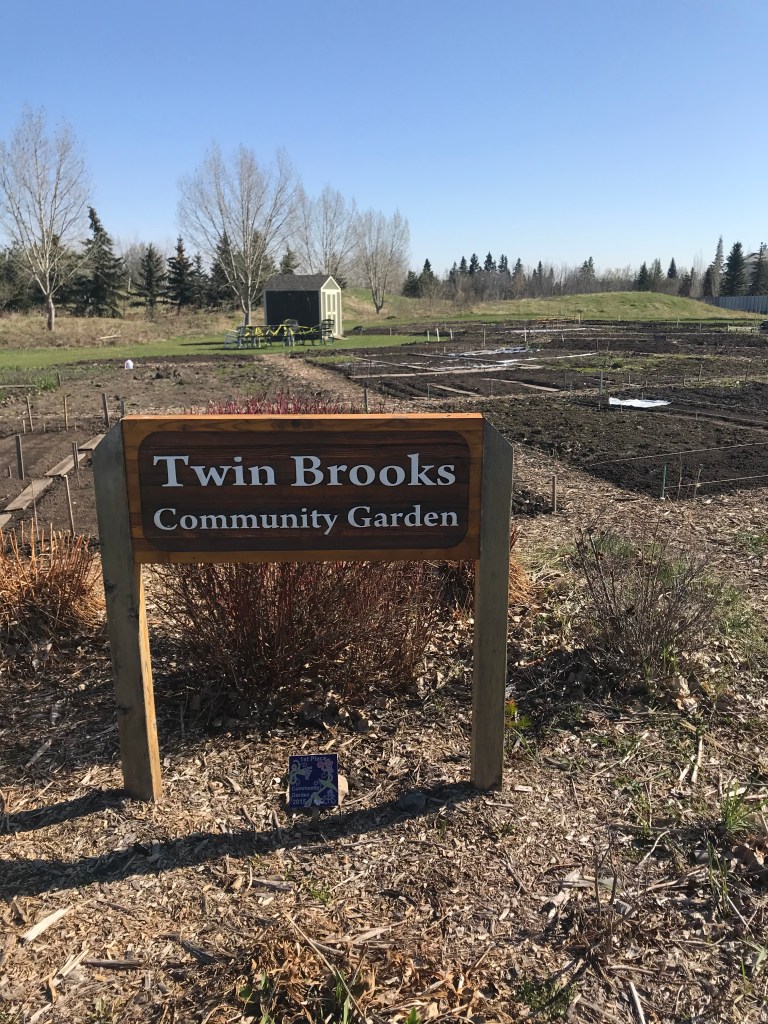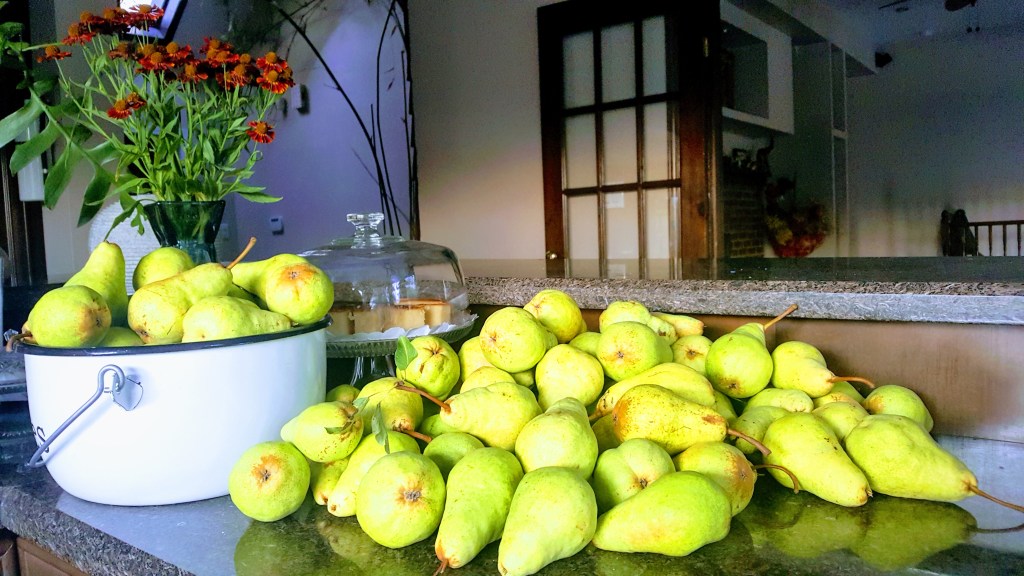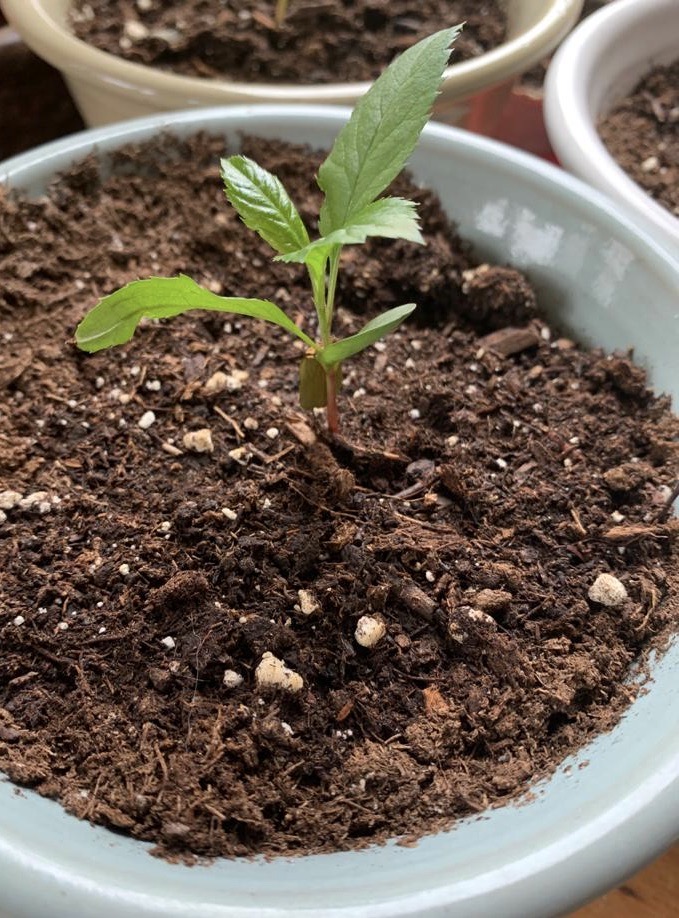Thank you to last week’s Guest Bloggers Audrey, Shanthi, Leslie and Ross for all the many helpful tips to inspire and launch us onto a successful first timer’s vegetable gardening adventure.
Let’s start Part Two with more information on soil preparation.

Planting and Soil Temperature
Living in regions with short growing seasons, it is not always practical to wait for the earth to warm to optimal soil temperatures for seed germination, before planting your vegetable seeds. As newbie vegetable gardeners, chomping at the bit to get outside and get going, we also may yet to have fully developed our gardening “patience” skills. Resources such as this by the Harvest Table offer guidance on minimum soil temperatures to wait for in order to maximize potential for harvesting success. Of course, if you are able to wait a bit longer, they also offer advice on warmer, optimal soil temperatures for supporting best conditions for seed germination once planted. We are impatient to get started sowing seeds, so we will be following the minimum soil temperatures listed below. [Tip: the electronic thermometer you may have acquired to take your temperature during the pandemic also works for taking soil surface temperature!]
Harvest Table’s Advice on Minimum Soil Temperatures for Seed Sowing and Germination:
- 2°C lettuce, onion, parsnip, spinach.
- 5°C: beet, broccoli, Brussels sprouts, cabbage, carrot, cauliflower, collards, Asian greens, Chinese cabbage, fava beans, kale, kohlrabi, mustard, arugula, radish, Swiss chard, turnip, pea, radish, rutabaga.
- 10°C: asparagus, celery, celeriac, corn, tomato.
- 15°C: bean, cucumber, eggplant, muskmelon, pepper, pumpkin, squash, watermelon.” https://bit.ly/3bCCi5O
- The ideal or optimal soil temperature for planting and growing most vegetables is 18° to 24°C.
Nature Planting Signals Calendar – Lilacs

We are also learning from Harvest Table that the “flowering of trees, shrubs, and perennial plants is determined by day length and temperature (this also applies to the lifecycle of insects and animals.) You can use the bloom time of shrubs and trees to tell you when it is safe to plant vegetables in the garden. Look at blooming trees and shrubs in your garden or neighborhood as indicators of when it is safe to plant vegetables directly in the garden.”
Here is one example – the lilac planting calendar for the vegetable garden:
- Lilac begins to leaf out: direct sow seeds of cool-weather vegetables such as peas, lettuce, and spinach; direct sow cold-tolerant herbs such as parsley and chervil; direct sow hardy annual such as calendula and sweet alyssum.
- Lilac flower spike is in full bloom: direct sow seed of basil, corn, and tomatoes; direct sow marigolds and geraniums.” https://bit.ly/3bnjkjz
Buying Seeds and Seedlings
Many grocery stores, hardware stores and gardening centres carry seed packets for sale for most commonly grown vegetables and herbs. With more people taking up home gardening during the lockdown, this year may be more challenging than usual to find all the seeds you want to purchase for the season. You may want to consider spending a bit more to buy seedlings for some to give you a head start or to fill the gap where seeds have been hard to find.
For example, Catherine is taking a blended approach. She germinated tomato seedlings from grocery store-bought tomatoes and sprouted roots from store-bought green onions, while purchasing herb seedlings (mint, sweet and thai basil, rosemary, thyme, parsley), butternut squash seedlings and pea shoots for her vegetable garden from a small local fruit and vegetable store. She also bought seeds from the grocery store for direct planting when the soil warms up for carrots, peas, beans, spinach, lettuce, beets and sunflowers. Lucia met with success buying seeds from Home Depot in Edmonton, and is nurturing basil seedlings herself indoors now, which she will transfer outside soon.

“Foodie” Catherine is passing on this tip about Spice Trader to Toronto Readers – as part of their pandemic pivot, in addition to their usual offerings of spices, oils, and condiments, the company is now offering Matchbox heirloom vegetable seedlings for online purchase and curbside pickup: https://bit.ly/3dVoR2m
Here are a few websites for reference to purchase more exotic seeds in future years, as we discovered they are no longer taking orders for this year due to higher than expected demand.
Ontario Seed Company – Veg Seeds – https://bit.ly/368GGsb
Matchbox Garden and Seeds (Heirloom Seeds) – https://bit.ly/2yd79YW
Community Gardening
Audrey returns this week, to tell us more about her experience with community gardens.

“In the three years that I have had one of these plots, I have learned many things about growing vegetables. Full disclosure, I also plant a few rows of flowers that love the sun. I always felt a tinge of guilt for allocating vegetable garden space to something as frivolous as flowers until a fellow gardener reminded me that there would be no vegetables if there aren’t bees to pollinate and bees are attracted to flowers.”

“As you can see in this photo of the start of gardening season, it’s flat and mostly bare, but in a few weeks, it will transform into lush greenery of all shapes and sizes including tall sunflowers and asparagus. No insecticides are allowed and the only fertilizer used is worm castings which are provided, along with compost from our own bins. The richness of the soil is the most important requirement for success and this is totally within the gardener’s control and well worth the effort.”

“My plot has these spindly green shoots in rows, as do most of the other garden plots. That’s garlic starting to grow after I planted it six inches deep last November. It has to be planted before the soil freezes and I had intended to go back to plant more but winter came early here in 2019. I separated cloves from heads of garlic that I had harvested last summer. Each clove generates a new head of garlic in the ground and is ready to dig up in late July when the tops start to whither. It then needs to age in a dry area for a few weeks to develop that characteristic garlic flavour. It’s very bitter if you skip this step. An attractive way to age it is to braid the tops of several cloves together so they hang in a column.”
“Growing garlic brings to mind another trait required for successful gardening- patience. Gardeners have to wait until the produce is ready to pick. I learned the importance of “pick when ready” with my first crop of zucchini. I was away for a week that August and before I left, the zucchini were almost ready. When I returned, they looked like English cucumbers on steroids. Because I had planted about 15 plants, I harvested a couple of bushels of zucchini and even my neighbours were tired of making zucchini bread. The next year, I planted three seeds and still gave some away. However, it is a good idea to plant a bit more than you need to allow for visiting voles, bunnies and “uninvited two-legged pickers”; and to donate extra to the local food bank and give to family and friends.”
Community Gardening in a Pandemic
“I am happy to learn that community gardens are now permitted to open under Ontario’s three-stage plan for re-opening parts of the economy, while continuing to maintain COVID-19 social/physical distancing practices. Our community garden opened this week, under a strict set of protocols that each gardener has agreed to follow.”
“There are now two hand washing stations- a feat in itself considering the gardens are under Hydro towers in an open field. The tool sheds will not be open so everyone must bring their own tools. Gardeners with even numbered plots may work there on even days; gardeners with odd numbered plots may only go on odd numbered days. I also have to complete a form each time I am there with the date and time of my visit so if there is a COVID outbreak, contacts can be traced. Unfortunately due to the current situation, I think a few people will give up their plots this year. These plots will go to people on the waiting list or be used to grow more food for the local food bank.”
“I plant my rows across. This season, I have planted four rows of flowers, two rows of three kinds of lettuce, two rows of beets (two types), single rows each of carrots, green beans, yellow beans, radishes, parsnips, about 30 little onions, two hills (three seeds each) of summer squash, and two hills of zucchinini. The garlic is still growing from planting last fall.”
“In last week’s post, I described how my attempts at growing cauliflower ended up in the compost heap. Too much effort to wrap their leaves around the white heads to protect from dis-colouring, with unsuccessful results. I had scratched cauliflower off my gardening list. However, I may now need to reconsider. During my first visit to the community garden for this year’s season earlier this week, I learned an intriguing tip from one of the more experienced community gardeners (keeping socially distanced, two metres apart). Apparently, there is a new type of cauliflower which automatically wraps its leaves around the white head by itself as it grows! Amazing.”
“I hope you will consider the rewards of growing your own vegetables and take the plunge. There’s lots of help available online and its an excellent activity and well suited to our current reality. Happy growing!”
Harvesting Tips
All our guest bloggers agree on the rich rewards of harvest time.

As Shanthi says, “Harvesting – Now comes the fun part.”
“Pick veggies at their prime and not a day late literally. Typically, a daily visit to the garden is needed.”
“The main thing to remember is that home gardening is for fun. It should be a source of relaxation and an opportunity to get the family to engage in joint activities. I actually made posters each season for a “Garden Club” that my three young boys signed up to. As they grew older (and wiser!), I posted positions such as “Assistant to Head Gardner” and they fell for that too. Nowadays, it is hourly pay given they actually do very hard work, but they never have the heart to collect!”
Audrey offers these additional harvesting tips.
“Generally mornings are the better time to pick produce, but wait until any dew has evaporated;
– Handle the produce carefully to reduce the chance of bruising. Picking usually takes two hands: one hand pulls gently on the vegetables and the other hand holds the stem where it is attached to lessen the impact of picking on the plant;

– Once a crop starts to reach maturity, check daily in order to pick at peak ripeness. For most crops the harvesting season will span several weeks, depending on the weather;
– When the first frost is forecast, pick all the remaining tomatoes, even the green ones, as they will continue to ripen indoors and provide fresh tomatoes well into the late fall;
– Some vegetables, like parsnips, turnip and kale, have more flavour if harvested after the first frost;
– Don’t leave any unpicked or spoiled vegetables in the garden at the end of the season as they may grow the next spring. It is a good practice to bury the actual plants at least 12-15 cm deep so they can decompose and enrich the garden’s soil.
Check out Harvesting Vegetables in the The Old Farmer’s Almanac at http://www.almanac.com for harvesting tips for specific vegetables and more information.”

More Harvesting Joy
Reader Wendy responded to last week’s Guest Blog post with enthusiasm. “There are so many things that I can relate to on it. I garden because it is so peaceful and I see progress through my work. I often joke about it as the best therapy going! I have been planting this garden for 30 years already.”
“With the garden ingredients I have made borscht, raspberry scones, strawberry shortcake, rhubarb and honeyberry sauce, sour cherry pies and much more, but last fall was the first time I have ever made pickled carrots from the carrots I have grown. They were delicious and I am planning on making many more jars this year! Definitely the garden keeps me active but I also eat really well due to it!”
More Resources
Catherine received this handy reference book as a Mother’s Day gift to help her on her way to vegetable gardening success. Here is the GoodReads book review of Ruth Lively edits “Tauton’s Complete Guide to Growing Vegetables & Herbs”.
“From planning and planting to harvesting, this is the most comprehensive and authoritative guide to growing your own vegetables and herbs. That’s good news for gardeners everywhere, as the “eat local” movement continues to gain momentum across the country. What to grow? Where to plant it? How to get the most from your garden? It’s all in here. First-rate gardening pros share their expertise on designing a garden of any size, as well as fundamentals about soil, irrigation, pest control, crop rotation, and more. With detailed advice on growing 85 crops, plus sidebars on how to make a garden as attractive as it is productive, readers will delight in finding all the information they’ll ever need on vegetable gardening in one place. “ https://bit.ly/3dIAysX

Home Depot – Gardening for Beginners 101
Thanks to Shanthi for putting this free online resource on our radar – Home Depot’s Gardening for Beginners 101, which offers tips on topics such as Preparing Soil; Reading Plant Tags; Planting Tips; Plant Care; Pests and Insects; Pruning, and more https://bit.ly/3g7Bqth.
The website resource also offers tips on Container Gardening 101 https://bit.ly/3cT7wac.
Ontario Seed Company – How to Grow Guides – https://bit.ly/2ZfmraP.
Ontario Seed Company – Zone Finder – https://bit.ly/3bFXQyl.
Fruit Tree Gardening
Shanthi also returns this week, to offer tips for planting fruit trees.
“There are many varieties to choose from. However, the best selection is at the beginning of the season. If you plan to plant one or to simply take stock of what is out there, visit the garden centers in May or early June. Many of the growing conditions for vegetables apply to these as well.

- Well draining and fertile soil
- Lots of sunlight and space around the tree to allow for air flow
- Other needs: There are other particular do’s and don’ts for each tree type. Online resources are great before you decide as well as guiding you through planting, pruning, and maintaining them through the years. Each year, it is best to spray them with tree spray per package instructions to ensure you end up with fruits that are bug free. Typically, these consist of a combination of dormant oil and garden Sulphur that are applied either in combination or separately in early spring before green buds set and then through the season until Fall. The package instructions provide step by step instructions.
- Regarding pruning – Although it can seem heartbreaking, experts recommend that you cut your tree down to your waist height after you initially plant it. This is to ensure that the height is manageable and that you don’t end up with a tree that is too tall for maintaining or picking. Again, all of this depends on personal preference. For example, if your intent is to attract birds and wildlife in addition to having a few fruits for yourself, or if you are going to use the tree for privacy, you may wish to let nature take its course.”

5 Week Old Apple Seedling 
Proud Fruit Tree Gardener- Claire
Next week’s Blog post will feature descriptive information on some of our personal favourite fruit trees.
We wish you much success and pleasure – Happy planting and gardening!




Love the effort from everyone! Cool post! Greetings from London.
LikeLike
A really fun posts with lots of differing things and views to think about. Thanks for sharing.
LikeLike